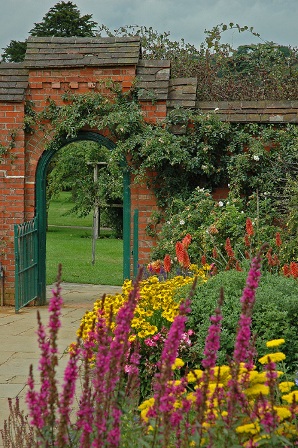
Residences
Chartwell: A Gardener’s View

February 14, 2009
by Mary Digby
Assistant Head Gardener at Chartwell
Reprinted with permission from The National Trust Magazine
When Chartwell first opened in 1966, it was Lady Churchill’s wish to have fresh flowers in the house, as there had been in his lifetime. These simple arrangements of cottage-garden flowers have been a feature ever since.
In March, when the house opens, daffodils forced in the greenhouse add variety to those growing outside, and are especially necessary after a cold winter. Freesias grown in pots in the greenhouse follow on, with tulips and De Caen anemones from the garden. These are grown in beds which were left for cut flowers when the kitchen garden was landscaped with trees and shrubs. Here, later in the year, Dutch and Spanish iris, gladioli, Canterbury Bells, Sweet Williams and permanent herbaceous plants like aquilegia and Alstroemerie “Ligtu Hybrids” will flower.
Brompton Stock s are a long-lasting cut flower. The seed is sown in the greenhouse in late July, then the seedlings transplanted into a cold frame in September where they grow throughout the winter and flower in May. Cosmea “Sensation Mixed” is an excellent annual for picking as it flowers all summer. The plants do need supporting, however, as they can reach four feet in height. Asters, larkspurs and lavateras add variety in season.
s are a long-lasting cut flower. The seed is sown in the greenhouse in late July, then the seedlings transplanted into a cold frame in September where they grow throughout the winter and flower in May. Cosmea “Sensation Mixed” is an excellent annual for picking as it flowers all summer. The plants do need supporting, however, as they can reach four feet in height. Asters, larkspurs and lavateras add variety in season.

2024 International Churchill Conference
A good crop of sweet peas is obtained by sowing the seeds in pots in November and placing them in a cold frame where they over-winter. The seedlings have their tips removed in late January to encourage young basal shoots, which are reduced to one per plant in April, when they are planted in the garden. The plants are trained up bamboo canes tied to supporting wires; all side-shoots and tendrils are removed to get long straight flower stalks. In a good season flowers will be produced from June to September and the plants will be laid in August. This entails releasing them from their canes, laying them along the ground and tying them to another cane about three feet away.
Dahlias can usually be relied on to flower until the end of October, as we usually escape early frosts due to the garden being on a slope. The varieties “Corydon” (peach), “Susannah York” (pink), “Glorie van Heemstede” (yellow), and “Wiegenlid” (white) have been grown here for years, the tubers being stored in the basement of the house in winter. Care is taken to bring them into growth in frames before planting out as only “Glorie van Heemstede” seems to be commercially available. Chrysanthemums from the greenhouse fill the house in November. The only flowers not grown specifically for cutting are roses, but with about 1000 bushes in the garden there are plenty to pick without them being missed.
Besides cut flowers, pot plants are grown for the house. These must be flowering and include hyacinths in spring, followed by Regal pelargoniums, fuchsias and Charm chrysanthemums for the autumn. We have a large collection of amaryllis (hippeastrums) which originated when Sir Winston was given one by the late Princess Marina; he was so taken with it that he said there must always be amaryllis at Chartwell. Some annuals make good pot plants: we find salpiglossis, browallias and white petunias most useful; the latter if cut back after the first flush will flower again. Lady Churchill loved white flowers so we always try to have a plant of that colour in her bedroom.
Subscribe
WANT MORE?
Get the Churchill Bulletin delivered to your inbox once a month.




